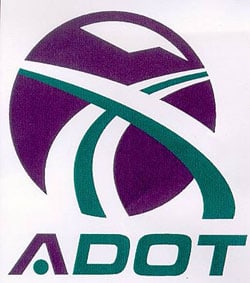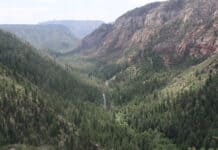Years from now, street lights will illuminate State Route 89A in West Sedona. That much will soon be fact. Everything else is still up in the air and open to debate.
That debate enters its next stage on Wednesday, Oct. 28, when engineers from the Arizona Department of Transportation present the various lighting options to the Sedona City Council.
All 68 of them.
The variations aren’t really as divergent as they sound, however, according to Assistant City Manager Alison Zelms. The major proposed options are split into minor variations. They vary in terms of the number of lights, heights of the poles, spacing between each pole, type of fixture and whether they’ll line one side of the road or be staggered along both sides.
The lights will be placed along the 2.19-mile stretch between Dry Creek Road and Airport Road in West Sedona.
ADOT and the city will elicit comments and feedback from residents about all the options, Zelms said.
At the Oct. 28 meeting, ADOT District Engineer John Harper will describe the potential lighting options and explain how to decipher the detailed Lighting Alternatives Spreadsheet that the city recently posted on its Web site. Based on comments, the council will have to prioritize what residents want most, be it cost to install, maintenance, daytime aesthetic, nighttime aesthetic, etc.
According to the spreadsheet, the number of lights varies between 40 and more than 200 and present heights range between 20 and 55 feet. Options range from only a few, tall poles that arch over the roadway or scores of shorter lights that barely hang their fixtures over the curb.
The matrix compares all the variations in a grid and shows ADOT’s suggested recommendations for each of the options.
The factors are interconnected, i.e., lower pole height means there will have to be more poles, while mast arm length and brightness increase or decrease the number of lights.
“We’ll be getting closer to a smaller number of alternatives,” Zelms said.
According to the spreadsheet’s explanation overview, the alternatives compared in three sections:
n Lighting Characteristics: Pole heights, mast arm lengths, fixture types, the lamp type, the wattage and photometrics — or the measure of how light is dispersed over an area.
n System Measures of Effectiveness: Output, spacing between light poles, the number of light poles on one side of the street or staggered, lighting needed for each road section, total watts and lumens used.
n Lighting Cost Estimate: Installation cost, maintenance costs and the city’s estimated responsibility.
The lights themselves include both high-pressure and low-pressure sodium lights with “cobrahead” fixtures, Monterey-style lights, LED fixtures and numerous fixture styles.
ADOT will also host a lighting alternatives open house Thursday, Nov. 5, from 4 to 7 p.m. at the Sedona Public Library, 3250 White Bear Road.
“This is the start of the discussion to narrow things down and move forward,” Zelms said.
The city and ADOT will take the feedback to reduce the potential options, then schedule further meetings to pare down the finalized lighting plan, she said.
According to the report, comment forms are available in hard-copy or digital format. The forms ask residents to prioritize designs elements, such as whether pole height is more important than energy use or whether overall cost outweighs the number of lights.
Comments are due by Wednesday, Nov. 25.
Christopher Fox Graham can be reached at 282-7795, ext. 129, or e-mail to cgraham@larsonnewspapers.com






















